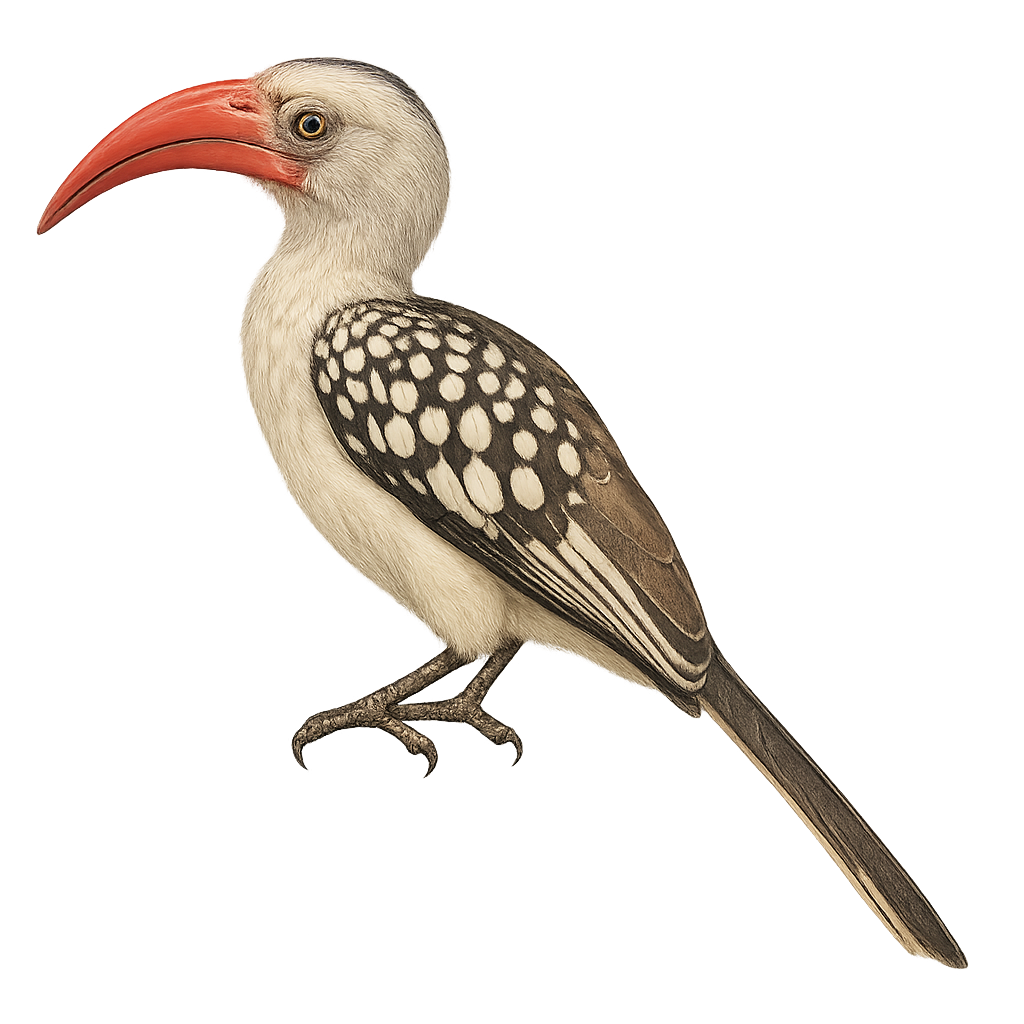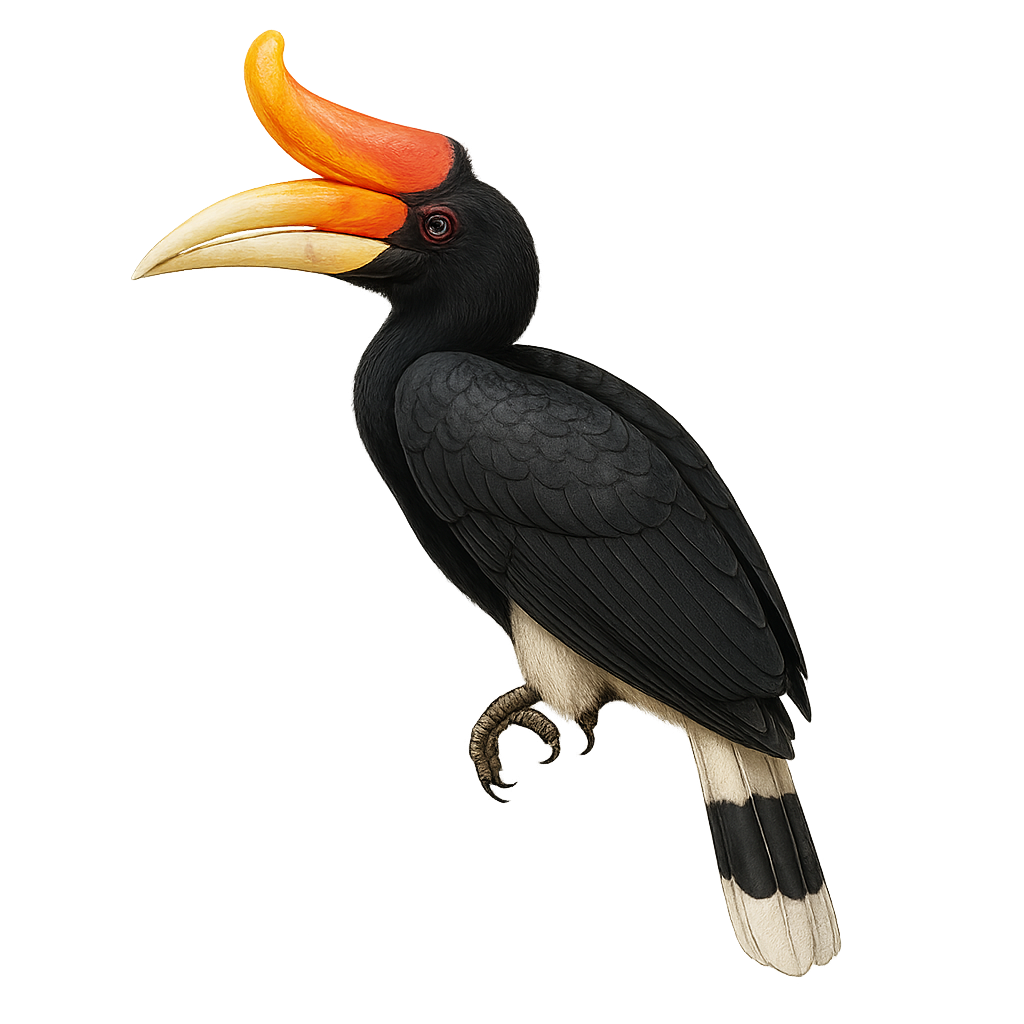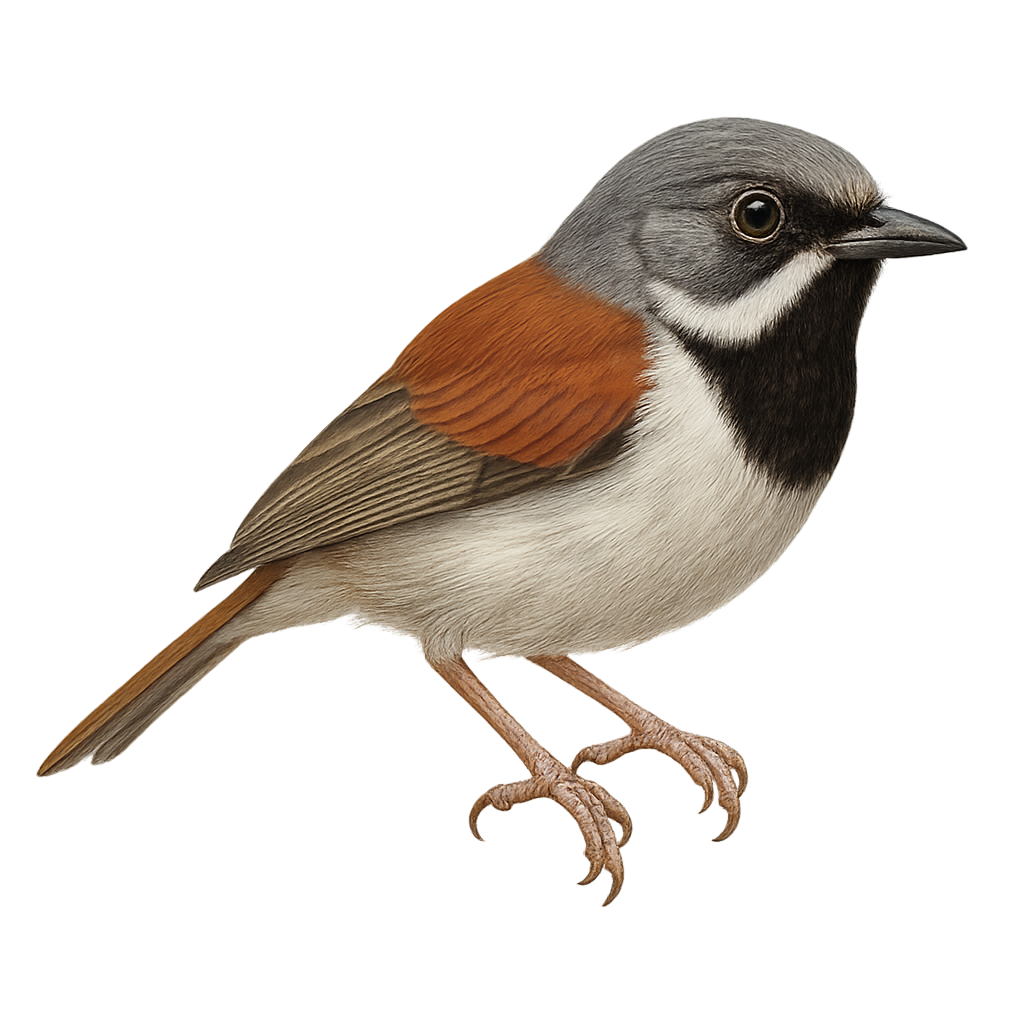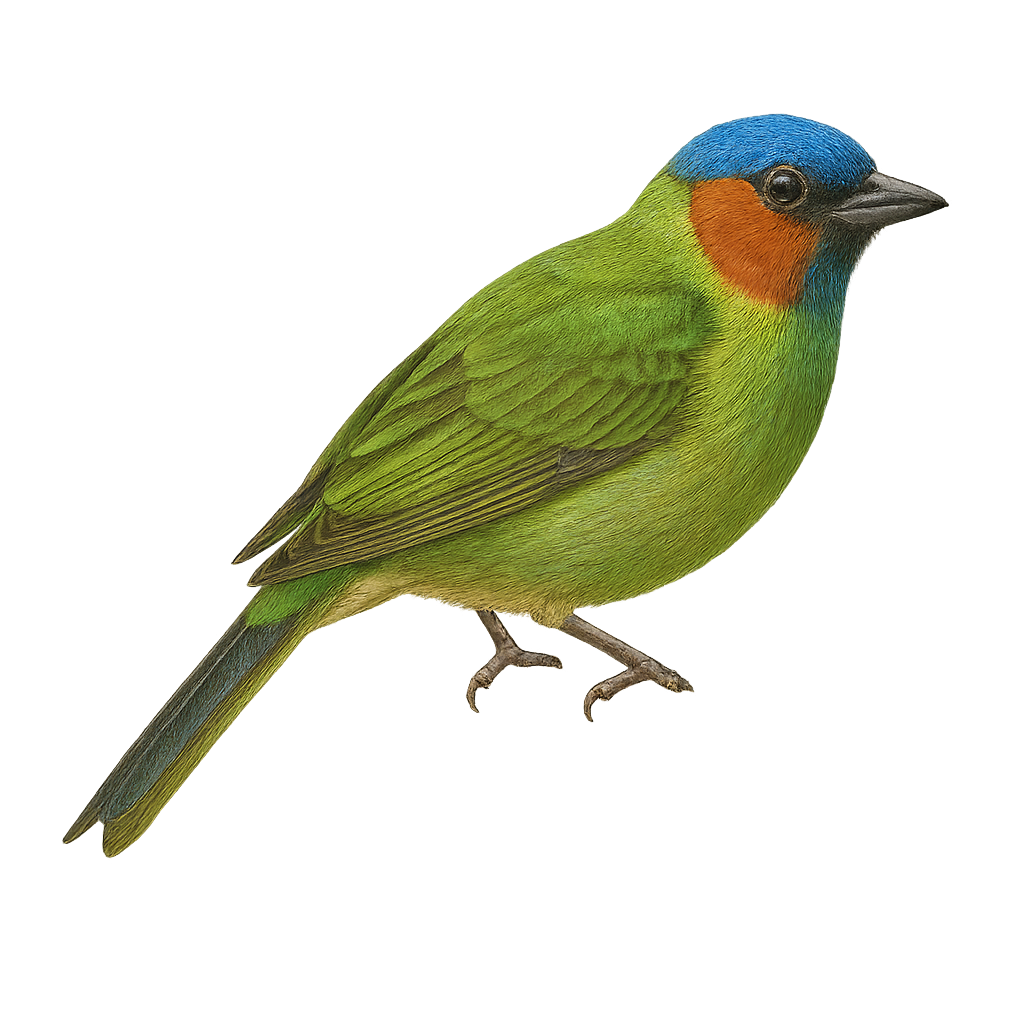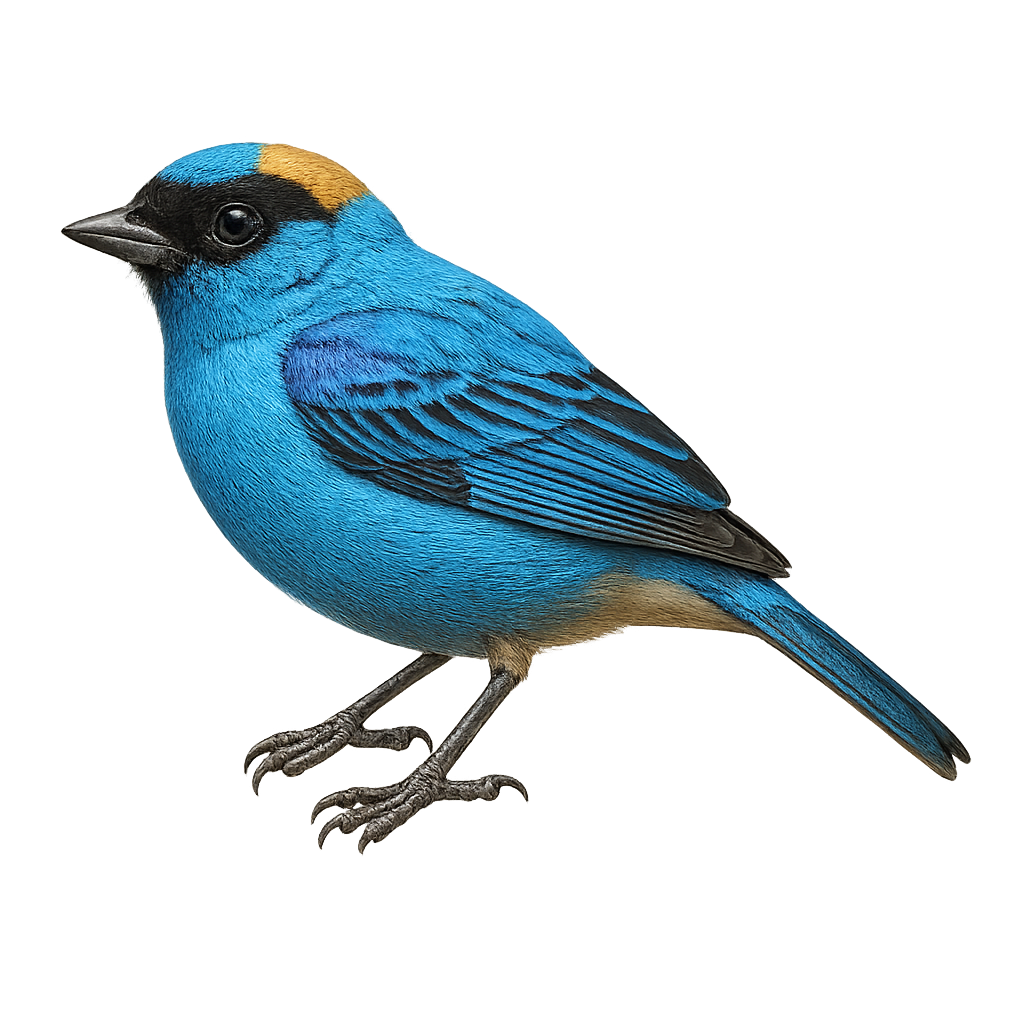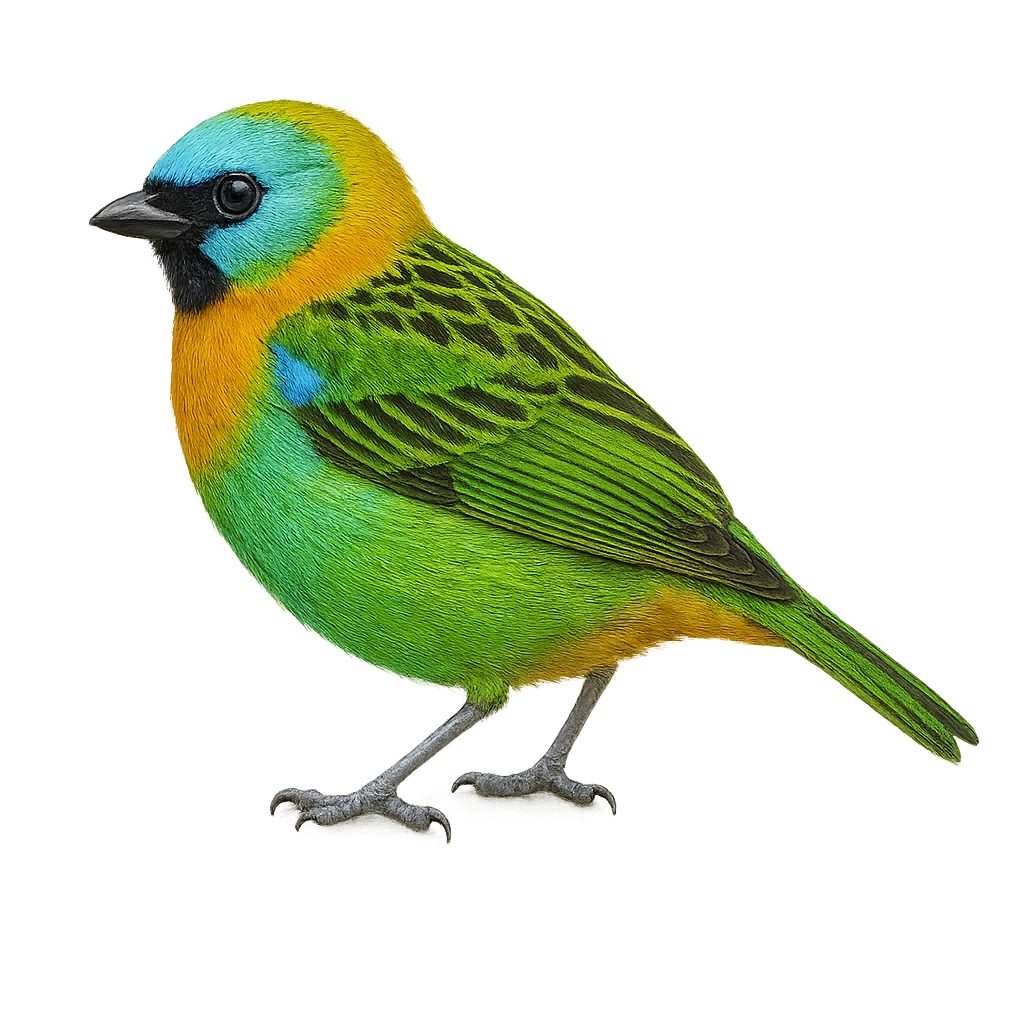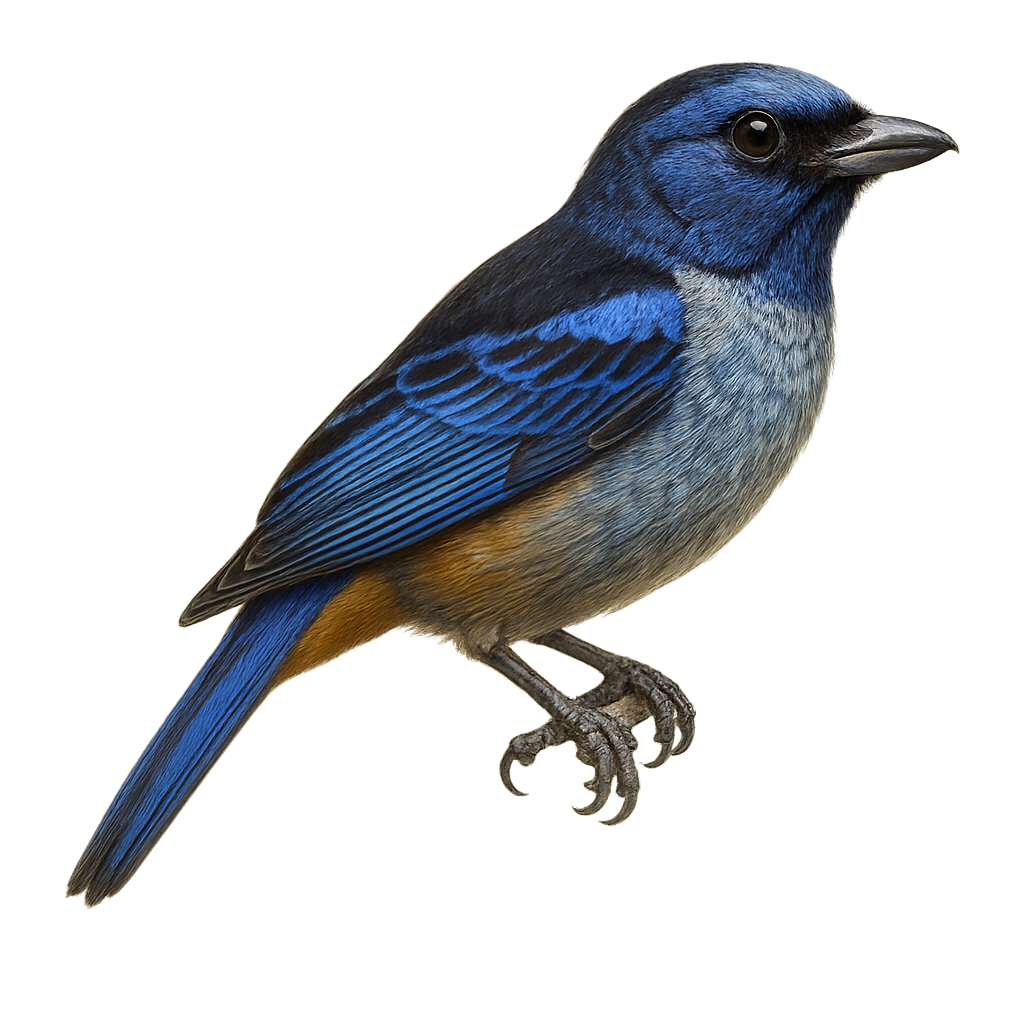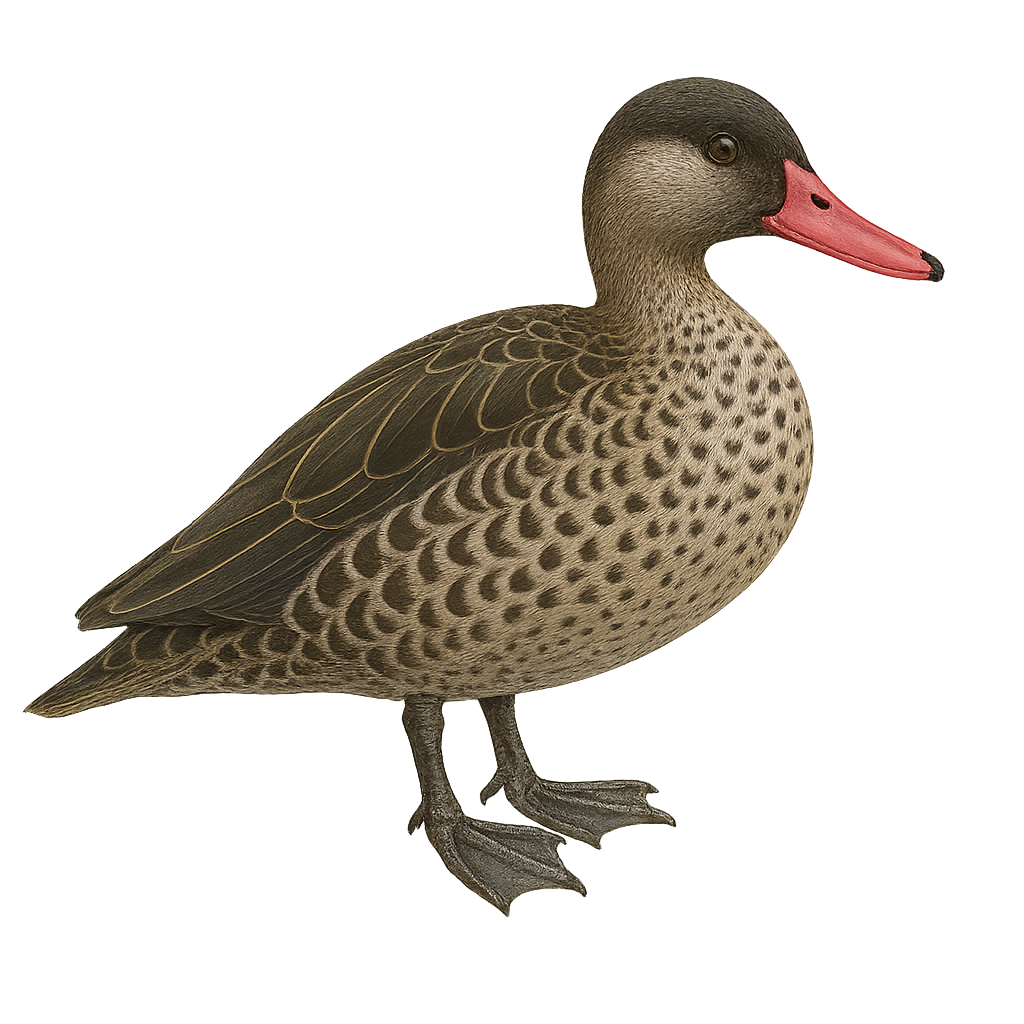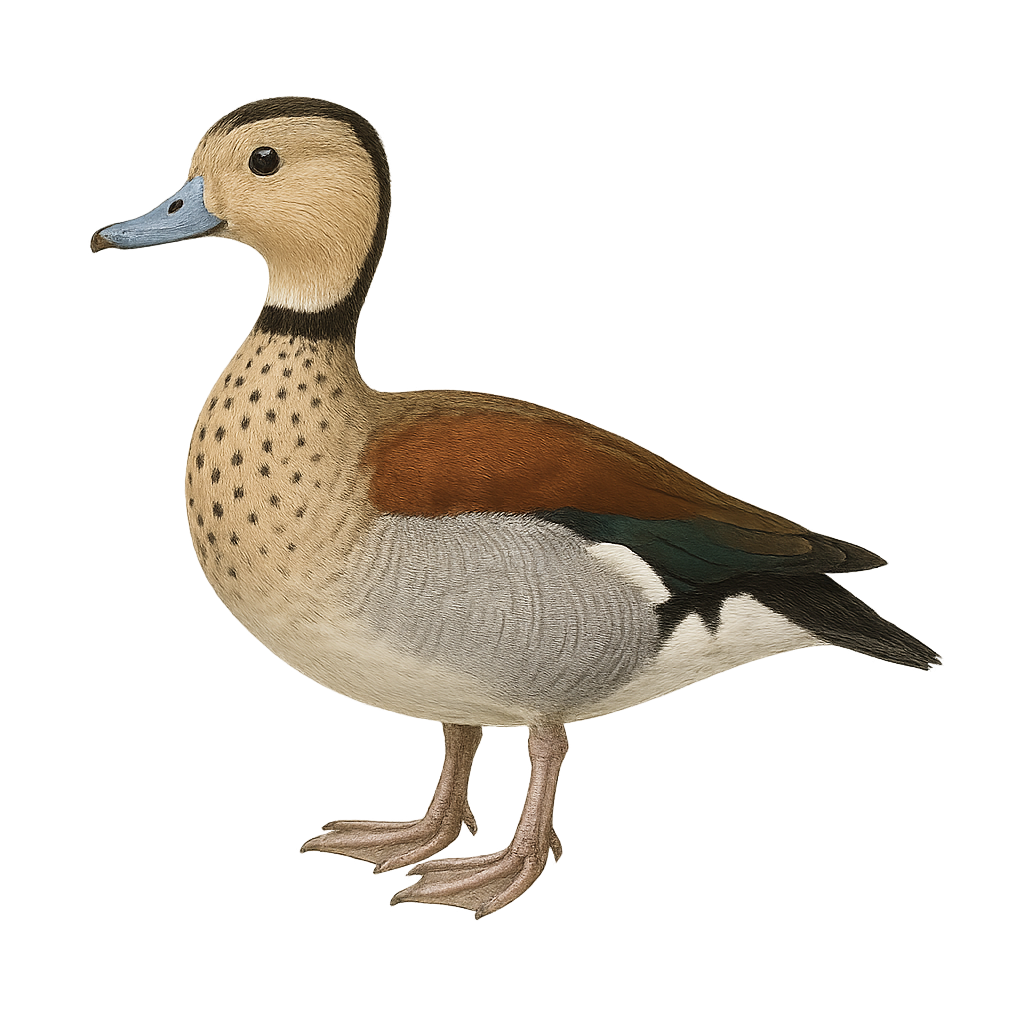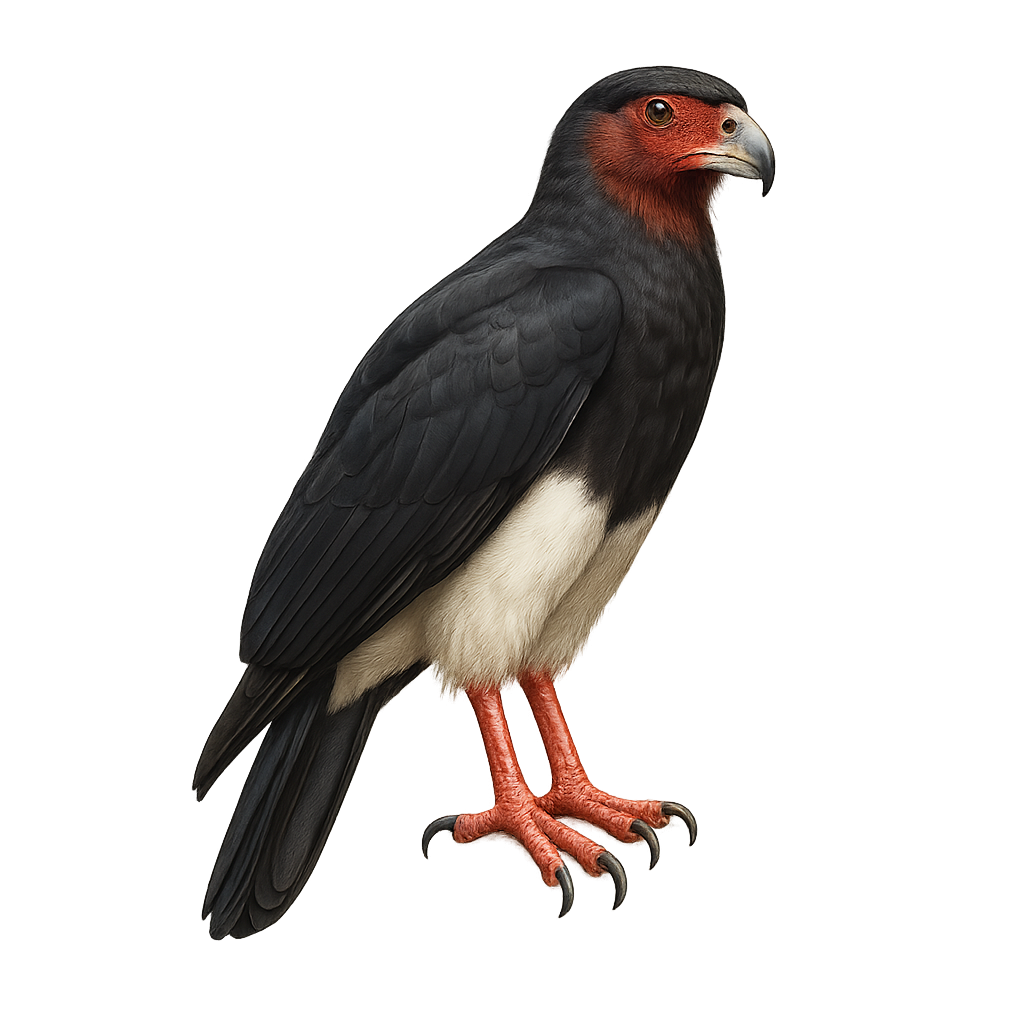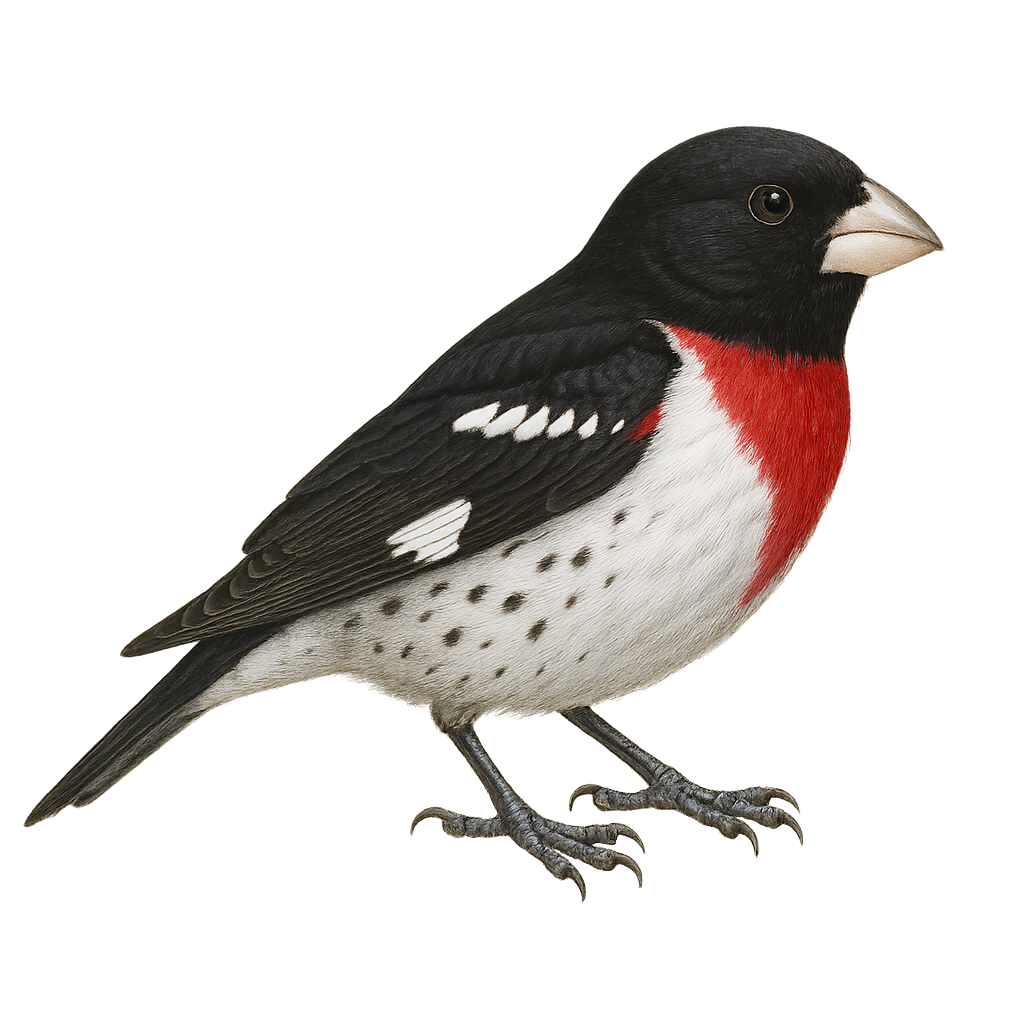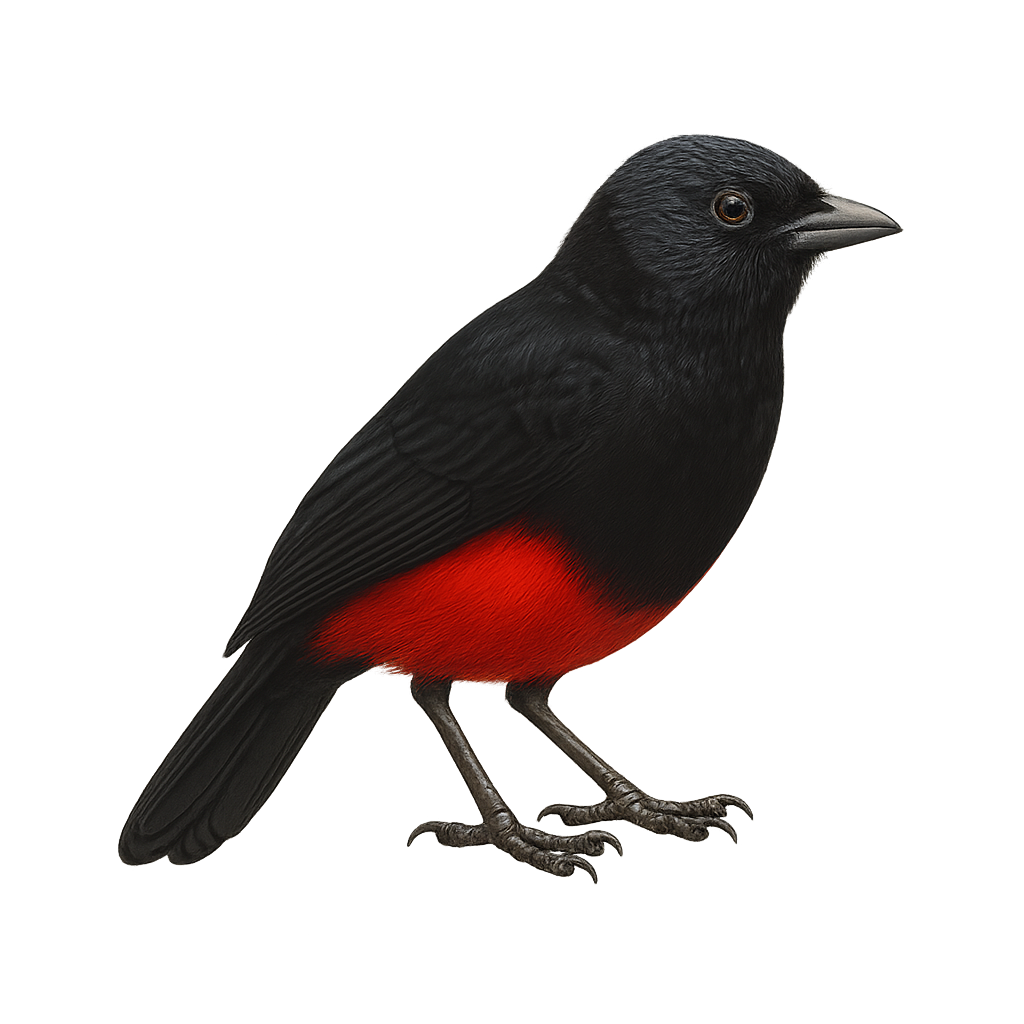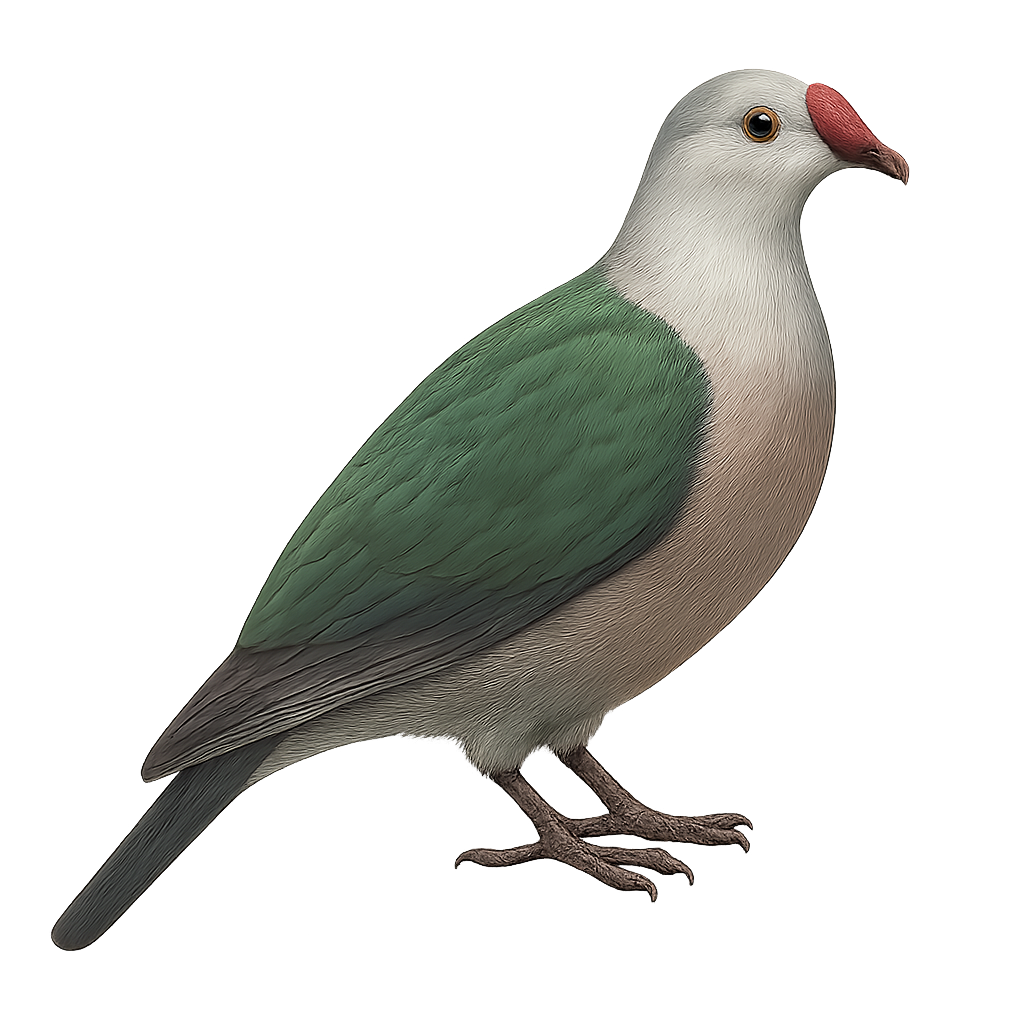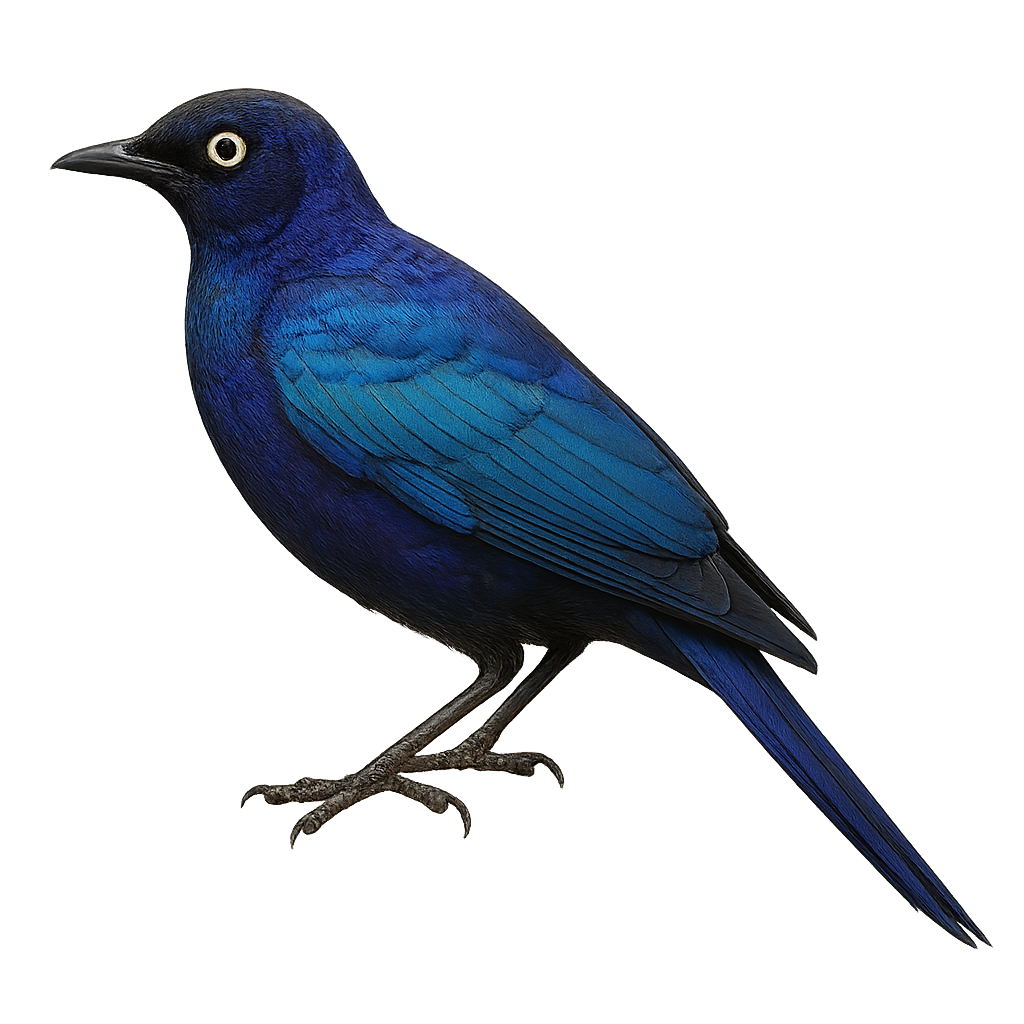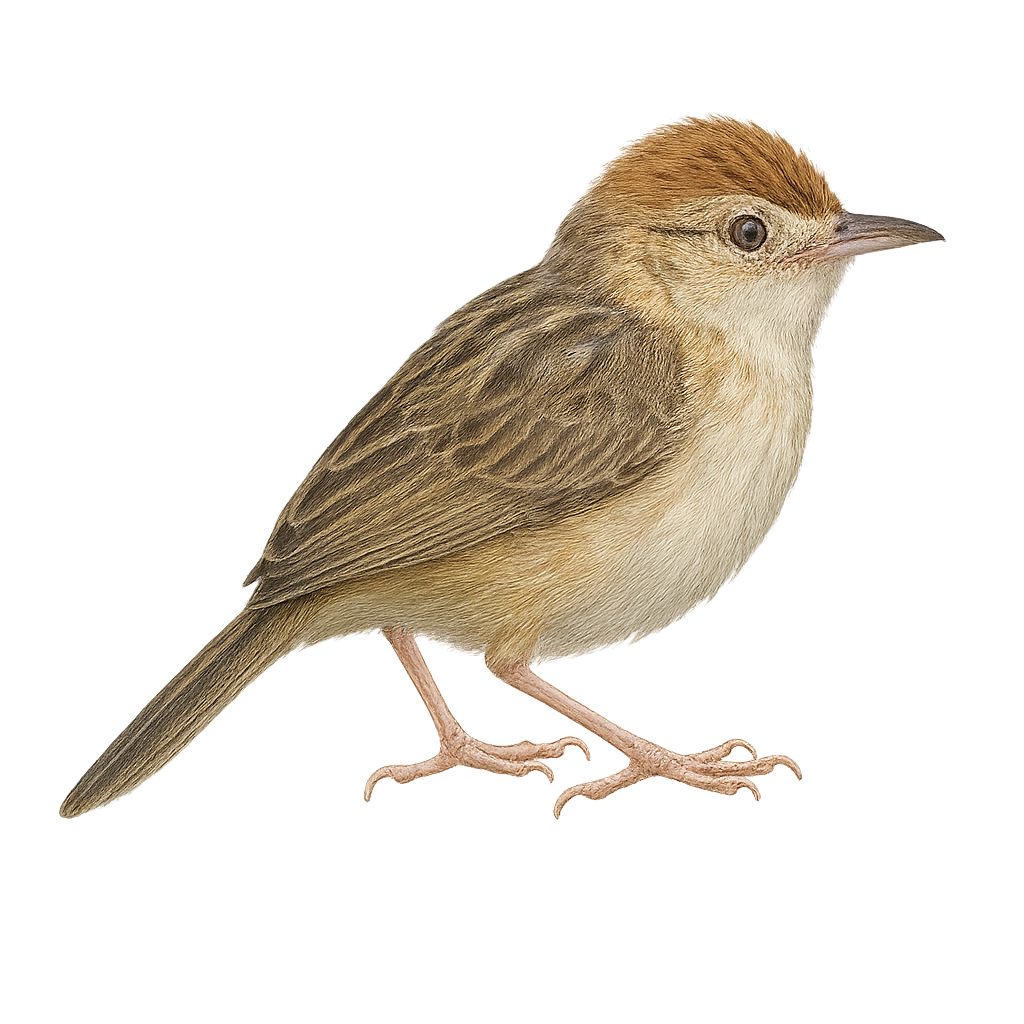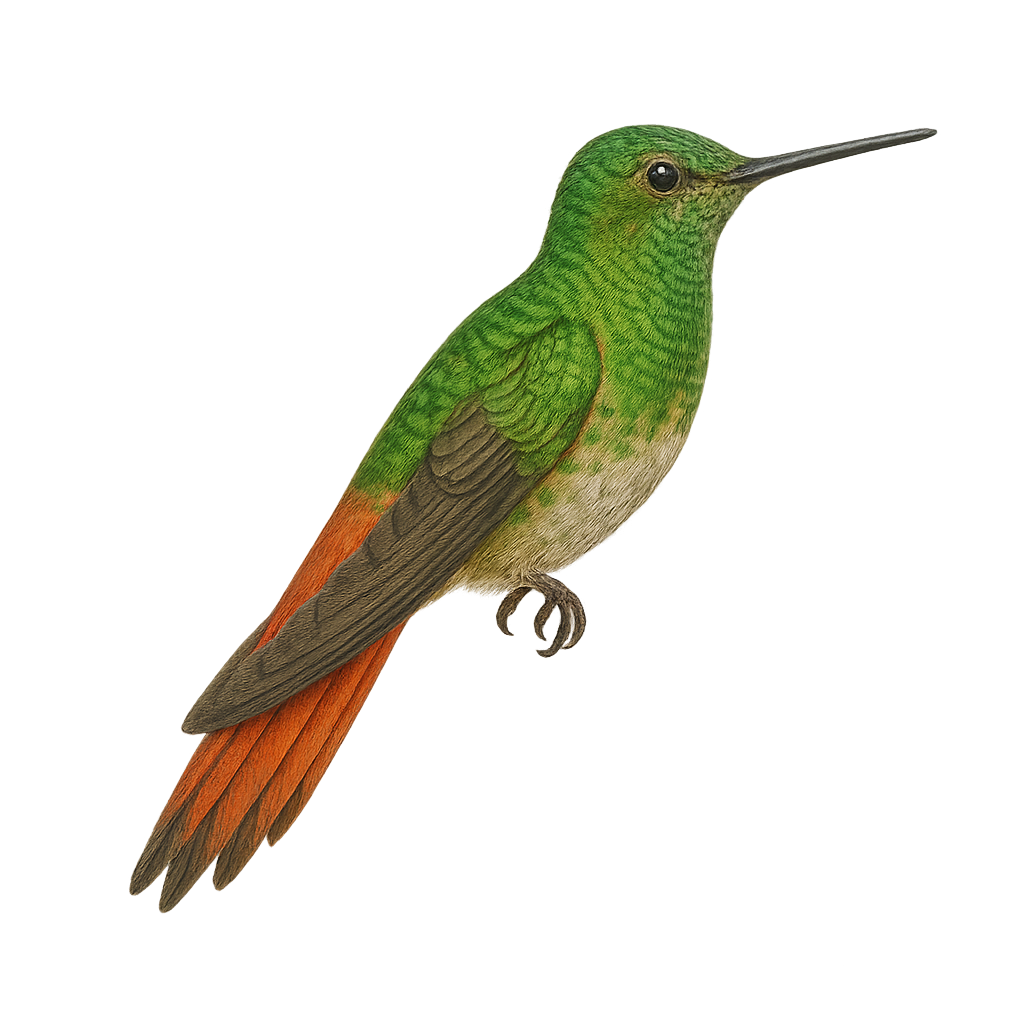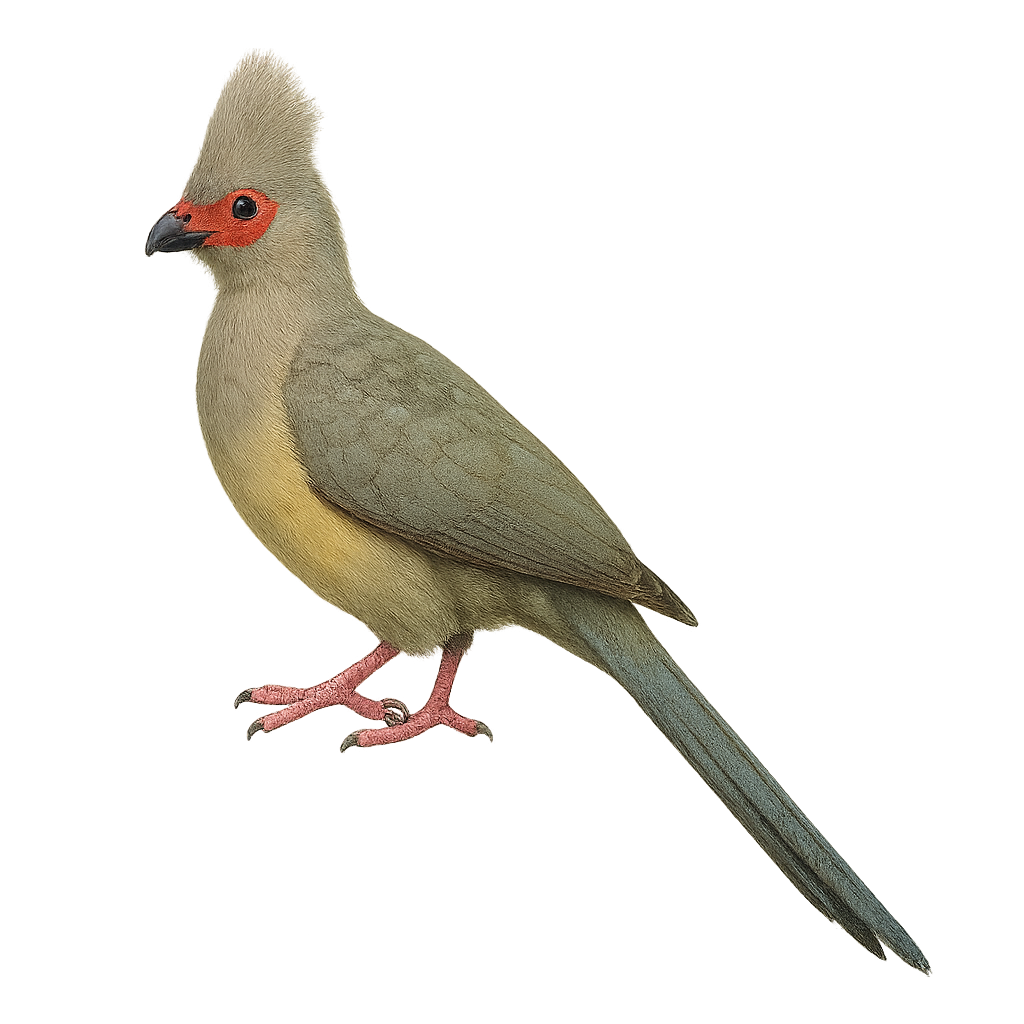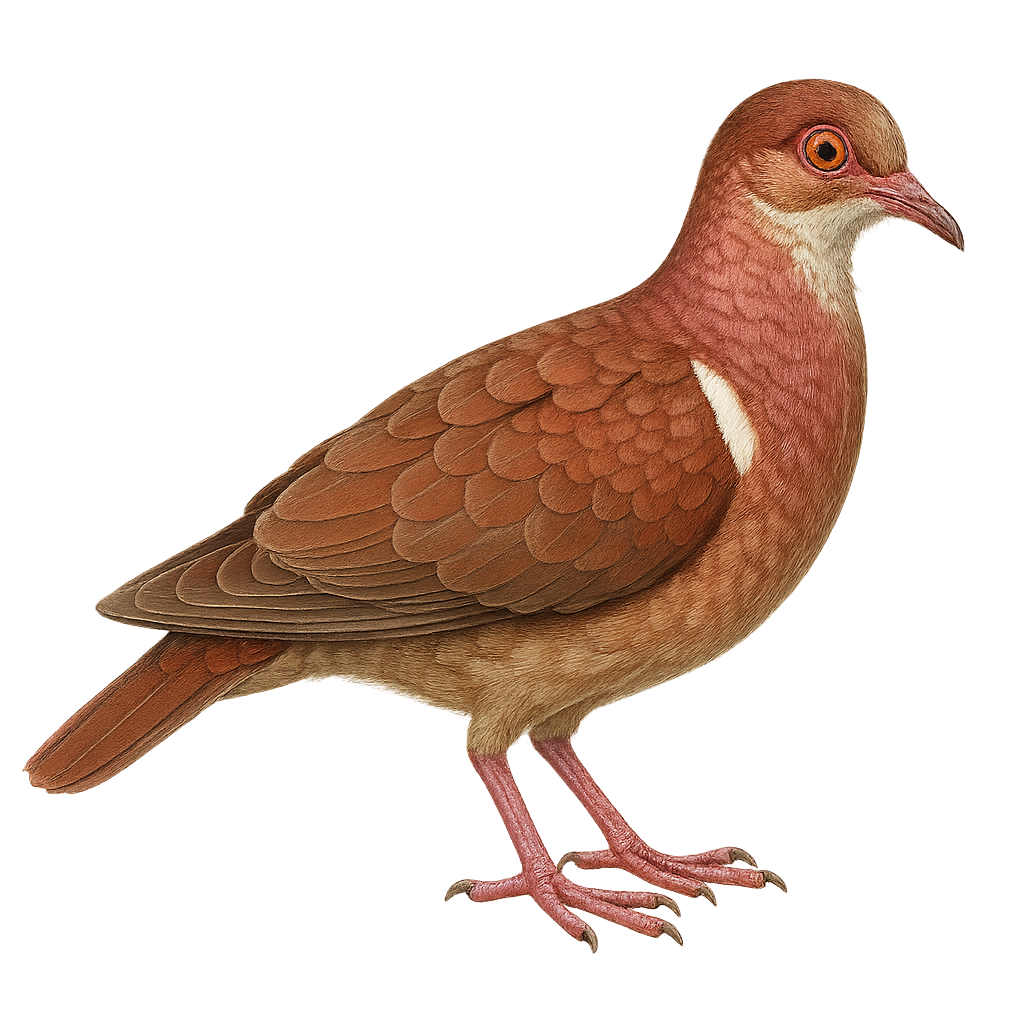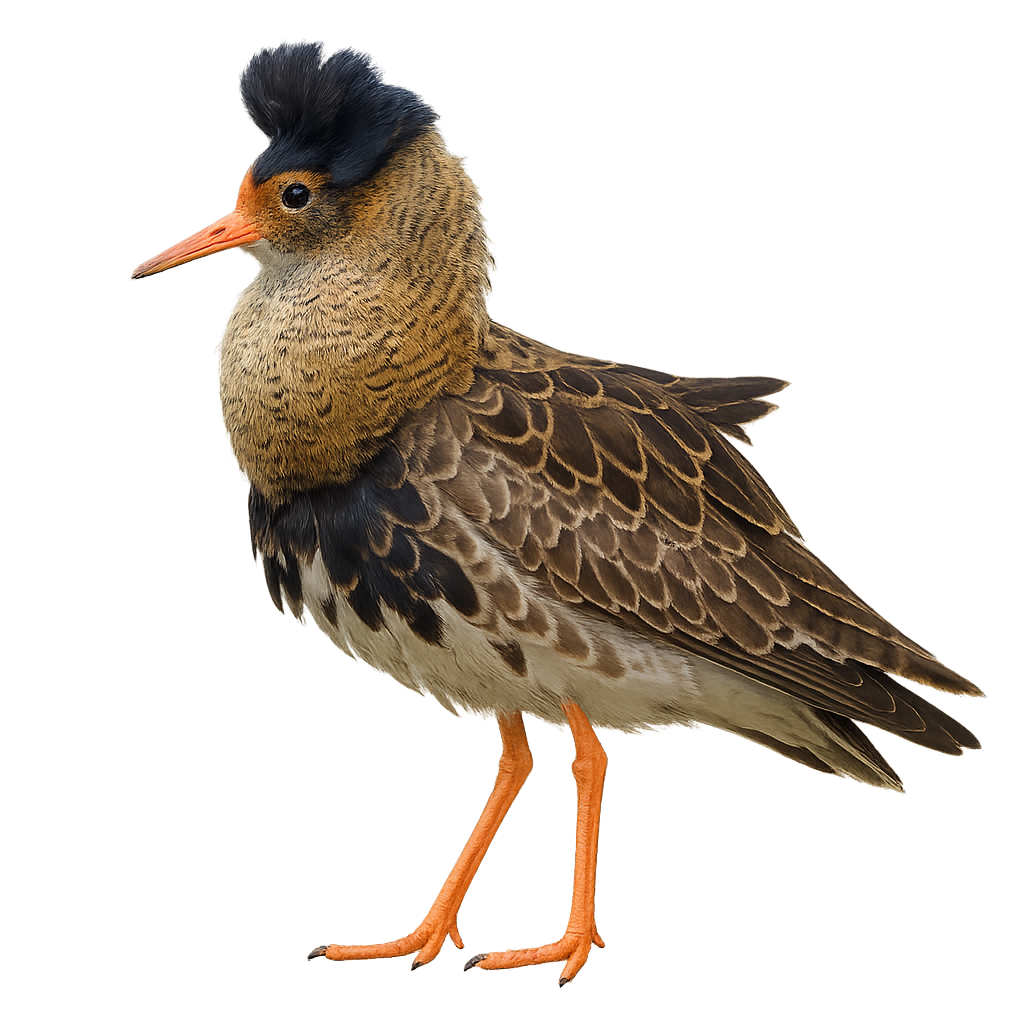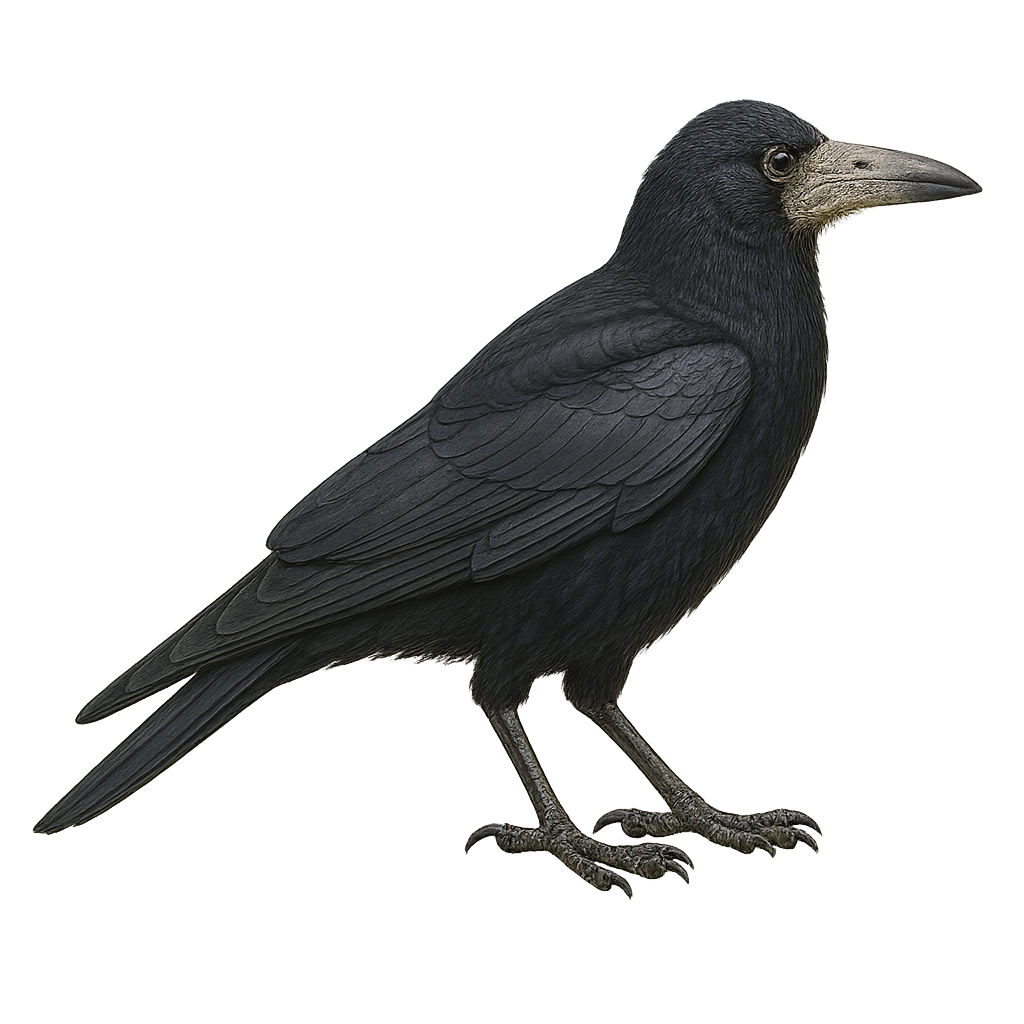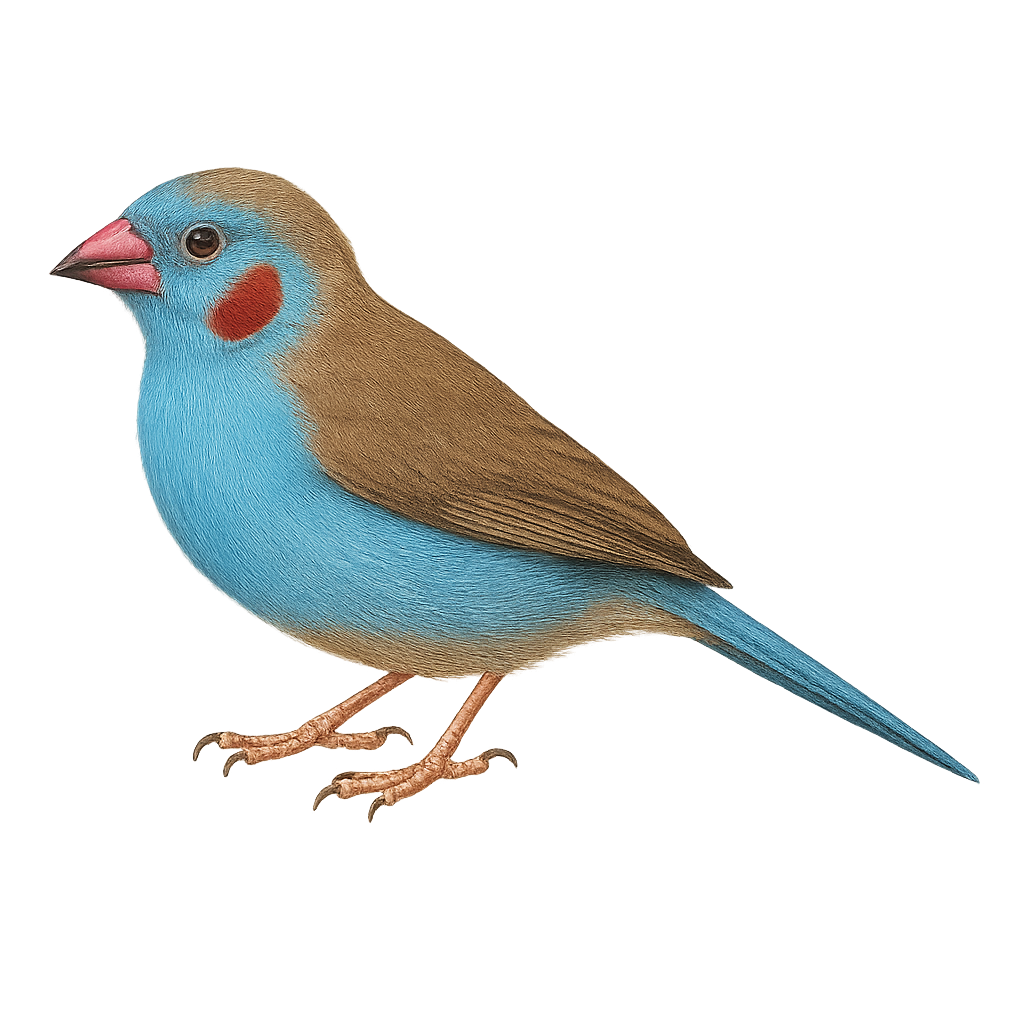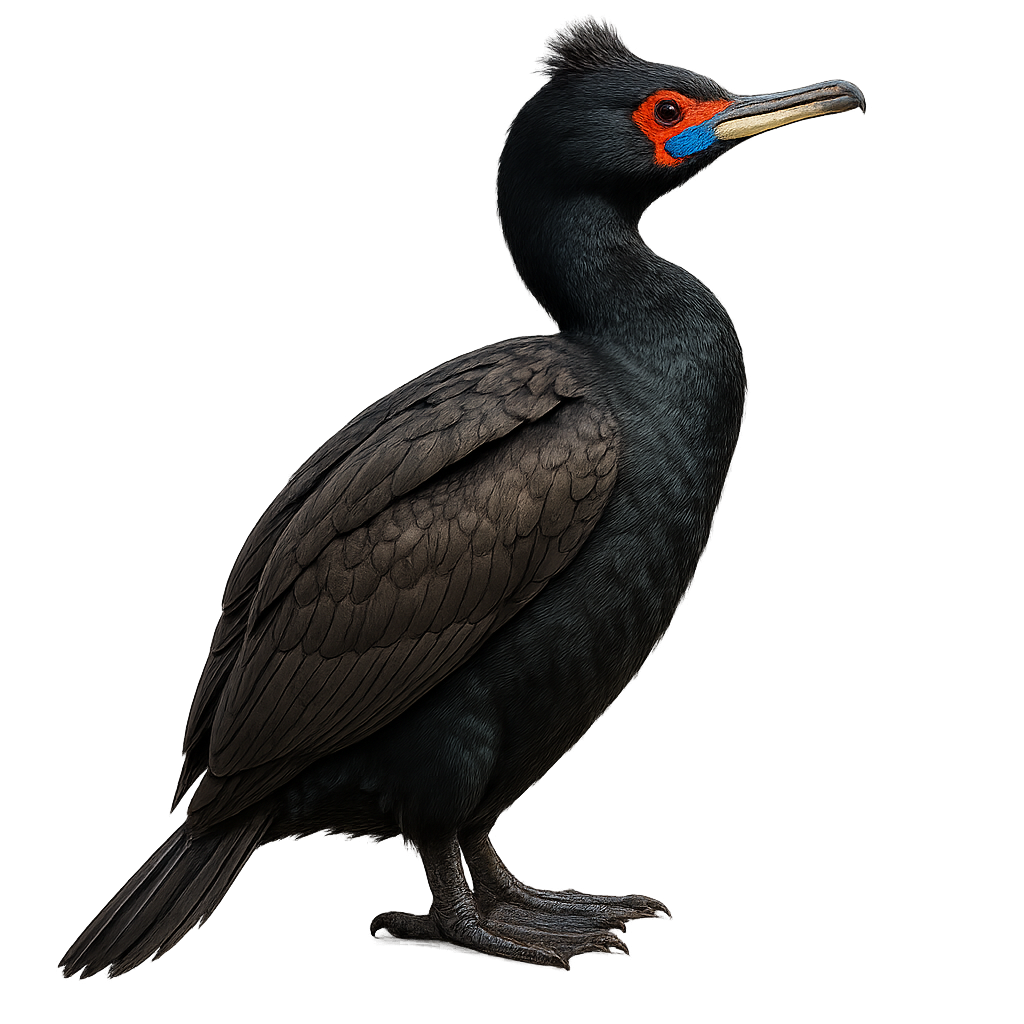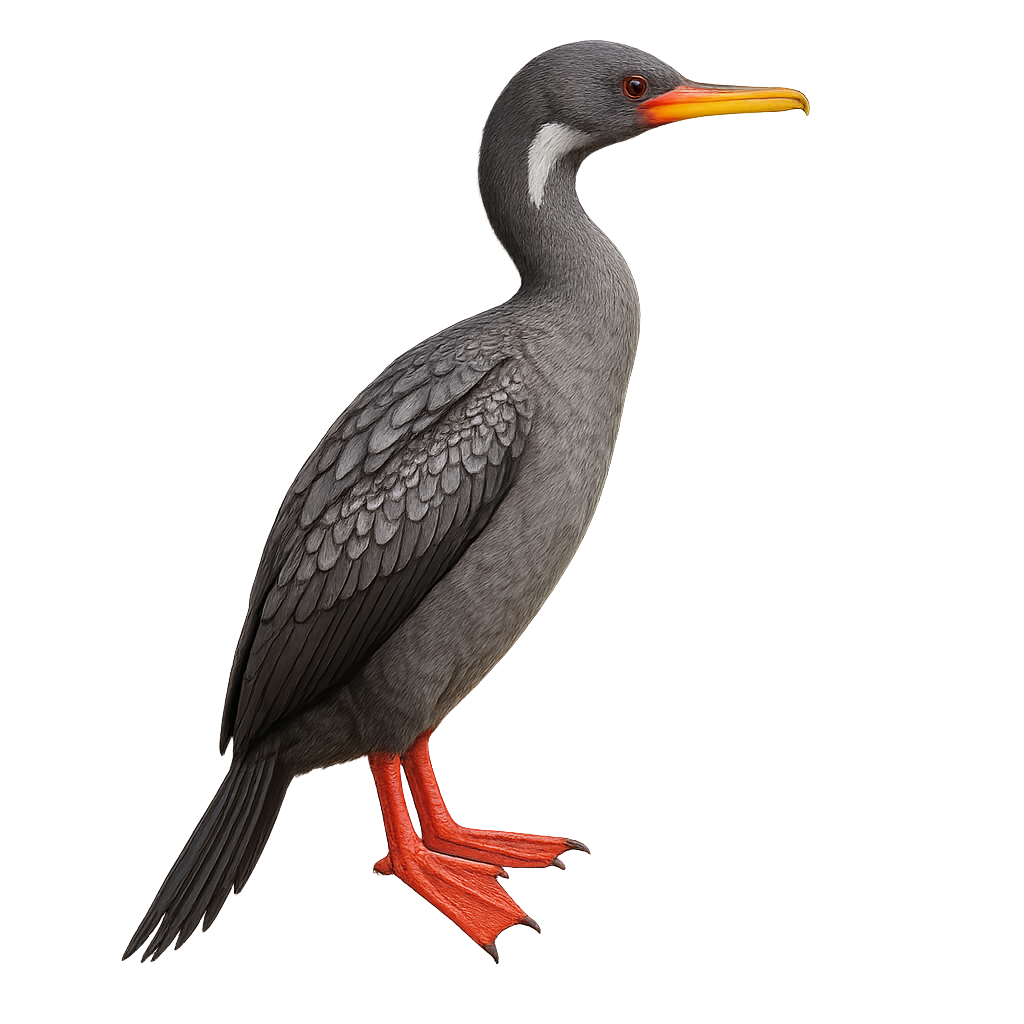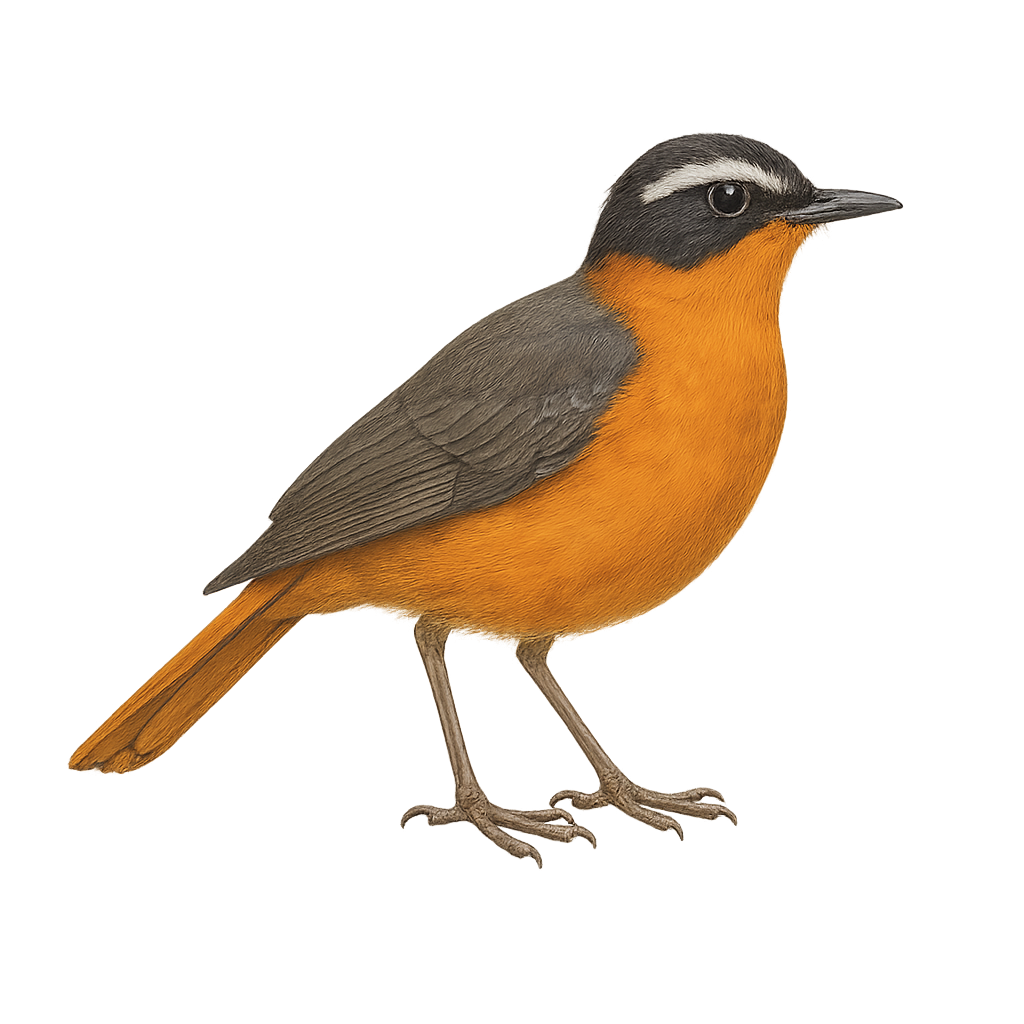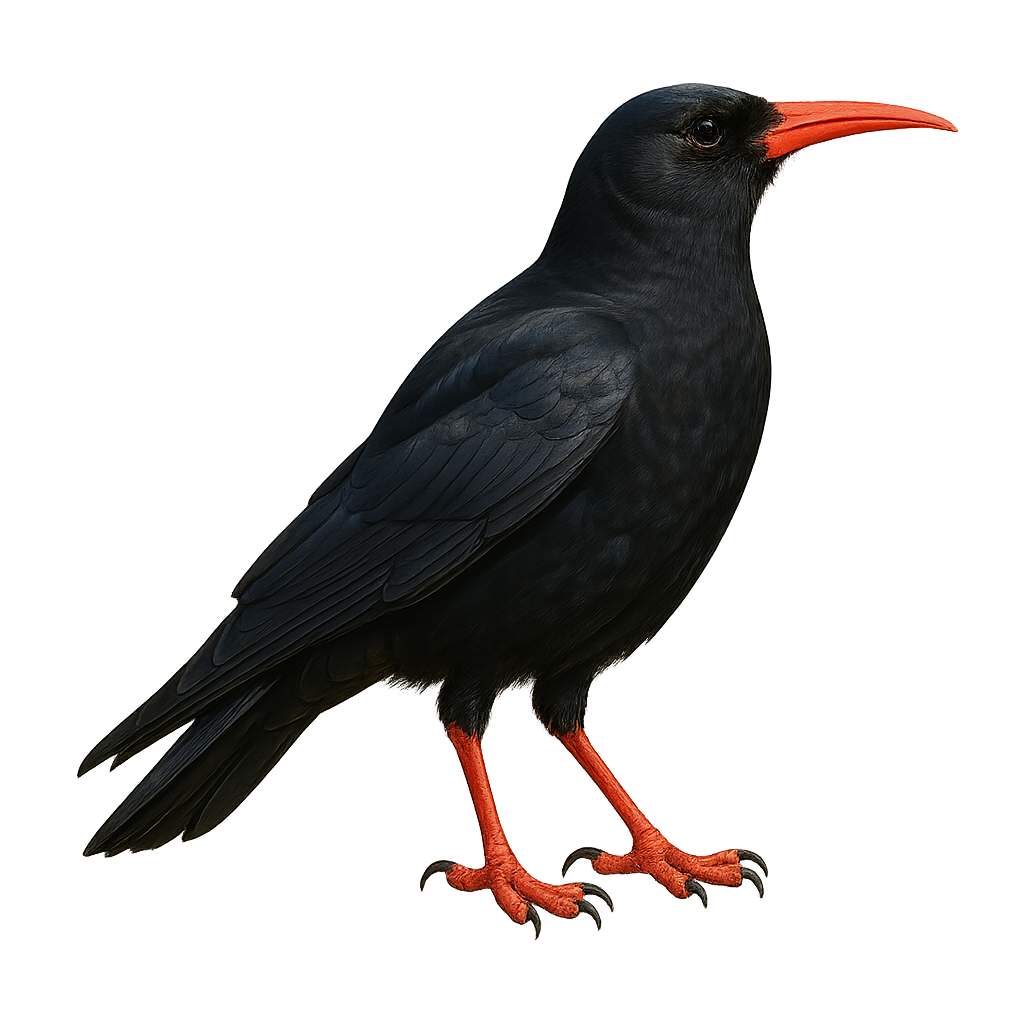The Ruaha Hornbill, Tockus ruahae, is a captivating bird native to the semi-arid regions of East Africa, particularly in Tanzania. This hornbill is notable for its large bill and vibrant coloration, featuring shades of black, white, and red. It is often seen in small groups or pairs, exploring savannas and dry forests in search of food. Its diet is varied, including fruits, insects, and occasionally small vertebrates. The Ruaha Hornbill plays a crucial role in its ecosystem, particularly in seed dispersal from the fruits it consumes. Although its conservation status is not currently concerning, deforestation and habitat loss could pose future threats to its populations.
The Rhinoceros Hornbill, or Buceros rhinoceros, is an impressive bird known for its size and distinctive appearance. It is easily recognizable by its prominent horn-shaped casque, which gives it its name. This casque, although large, is hollow and lightweight. The bird's plumage is primarily black, with white feathers on the tail and white markings on the wings. Its eyes are surrounded by brightly colored bare skin, often red or orange. The Rhinoceros Hornbill inhabits the tropical forests of Southeast Asia, particularly in Malaysia, Thailand, and Sumatra. It plays a crucial role in its ecosystem as a seed disperser, aiding in forest regeneration.
The Red-tailed Vanga, or Calicalicus madagascariensis, is an endemic bird of Madagascar, belonging to the Vangidae family. It is characterized by its striking plumage, with a black head and bright red back, contrasting with a white belly. This bird measures about 14 cm in length and primarily feeds on insects and small invertebrates. It mainly inhabits the dry forests and wooded areas of the island. The Red-tailed Vanga is a diurnal bird, active mainly during the day. Although its conservation status is concerning, it is still relatively widespread in its natural habitat. Its breeding season generally extends from September to December, coinciding with the rainy season in Madagascar.
The Rufous-cheeked Tanager is a colorful and fascinating bird native to the tropical forests of South America. It is distinguished by its rufous cheeks, contrasting with its primarily blue and green plumage. Measuring about 14 cm in length, it is often seen in small groups, feeding on fruits and insects. Its natural habitat includes humid forests and wooded areas, where it plays a crucial role in seed dispersal. Although its conservation status is currently of least concern, deforestation poses a potential threat to its habitat. Observing this bird requires patience and discretion, as it is rather suspicious of humans.
The Rufous-naped Tanager is a colorful and fascinating bird native to the humid tropical forests of South America. It is distinguished by its vibrant plumage, with a rufous head and nape contrasting with a blue-green body. This tanager is often seen in small groups, feeding mainly on fruits and insects. Its natural habitat includes mountain forests, where it can be spotted at various altitudes. Although not considered threatened, deforestation poses a potential threat to its habitat. Its melodious song and bright colors make it a favorite subject for birdwatchers and nature photographers.
The Red-headed Tanager is a colorful and fascinating bird native to the tropical forests of South America. It is easily recognizable by its bright red head contrasting with its green and blue body. This bird measures about 14 cm in length and primarily feeds on fruits, insects, and nectar. It lives in small groups and is often observed in the canopy of humid forests. Although its habitat is threatened by deforestation, it remains relatively common in some areas. Its melodious song and lively nature make it a favorite subject for ornithologists and nature photographers.
The Red-necked Tanager, or Tangara fastuosa, is a bird from the Thraupidae family, endemic to Brazil. It is known for its striking plumage, featuring a bright red head, a vibrant green body, and blue wings. This small bird measures about 13 to 14 cm in length and weighs between 18 and 21 grams. It primarily inhabits the humid tropical forests of eastern Brazil, where it feeds on fruits, insects, and nectar. The Red-necked Tanager is often seen in small groups or pairs, actively moving through the canopy. Although its habitat is threatened by deforestation, it is currently classified as "Near Threatened" by the IUCN.
The Red-shouldered Tanager, or Tangara velia, is a vibrant bird found in the tropical forests of South America. It is easily identifiable by its striking plumage: a bright red back contrasting with a black belly and blue wings. This small passerine, measuring about 14 cm in length, is often seen in pairs or small groups. It primarily feeds on fruits, but also insects, which it catches with agility. Its melodious and varied song is a delight for birdwatchers. Although its habitat is threatened by deforestation, the Red-shouldered Tanager remains relatively common within its range.
The Red-billed Teal, Anas erythrorhyncha, is a medium-sized waterfowl known for its distinctive bright red bill. Its plumage is mostly brown with lighter patterns on the belly and grayish reflections on the wings. It inhabits the wetlands of sub-Saharan Africa, favoring lakes, marshes, and rivers. This duck is often seen in small groups but can form large gatherings outside the breeding season. It primarily feeds on aquatic plants, seeds, and insects. Although generally discreet, it can be approached closely in some areas where it is accustomed to human presence.
The Ringed Teal, Callonetta leucophrys, is a small, elegant duck native to South America, primarily found in the wetlands of Paraguay, Brazil, and Argentina. It is distinguished by its colorful plumage: males have a reddish-brown head with a distinctive white band around the neck, while females display a more subdued brown-gray plumage with delicate patterns. These ducks prefer wetlands, marshes, and lakes with dense vegetation, where they primarily feed on seeds, aquatic plants, and insects. Although generally discreet, they can be observed in small groups, often in pairs. Their behavior is rather suspicious, but they can become accustomed to human presence in protected areas.
The Red-throated Caracara, Ibycter americanus, is a fascinating bird of prey belonging to the Falconidae family. It is distinguished by its bright red throat and black and white plumage. This bird is primarily found in the tropical forests of Central and South America, where it plays an important ecological role as a predator of insects and small vertebrates. The Red-throated Caracara is known for its social behavior, often observed in noisy family groups. It is also recognized for its ability to dislodge wasp nests, feeding on the larvae. Although its conservation status is currently "least concern," deforestation poses a potential threat to its natural habitat.
The Rose-breasted Grosbeak is a medium-sized songbird, easily identifiable by its vivid rose-colored breast contrasting with its black and white plumage. Males display brighter plumage than females, who are mostly brown with hints of yellow. This bird inhabits deciduous forests and woodland edges in North America, migrating to Central America for the winter. Its melodious song is often compared to that of a robin. It primarily feeds on seeds, fruits, and insects. The Rose-breasted Grosbeak is a sociable bird, often seen in small groups. Its breeding season extends from spring to summer, with nests built in trees or shrubs.
The Red-bellied Grackle, or Hypopyrrhus pyrohypogaster, is an endemic bird of Colombia, primarily found in the humid forests of the Andes. This medium-sized passerine is notable for its glossy black plumage contrasted by a bright red belly. It typically lives in small groups and feeds mainly on fruits, insects, and small invertebrates. Deforestation and habitat fragmentation are the main threats to this species, classifying it as vulnerable according to the IUCN. Conservation efforts focus on habitat protection and raising awareness among local communities about the importance of preserving this unique species.
The Ducula rubricera, or Red-knobbed Imperial Pigeon, is a medium-sized bird belonging to the Columbidae family. It is primarily found in the tropical rainforests of New Guinea and surrounding islands. This pigeon is notable for its bright red head, contrasting with its grey and white plumage. It mainly feeds on fruits, playing a crucial role in seed dispersal. Although its habitat is relatively stable, deforestation poses a potential threat. Its behavior is generally suspicious, but it can become accustomed to human presence in protected areas. Its breeding period varies depending on the availability of food resources.
The Redshank is a medium-sized wader with distinctive plumage that changes with the seasons. During the breeding season, the male displays vibrant colors, with a black head and reddish chest, while the female has more subdued tones. Outside the breeding season, both sexes adopt a more muted plumage, often gray-brown with shades of white and black. The Redshank is primarily found in wetlands, estuaries, and lakeshores, where it feeds on small invertebrates, aquatic insects, and occasionally worms and crustaceans.
This migratory bird is known for its long-distance migration, between its breeding grounds in northern Eurasia and its wintering areas in southern Asia and North Africa. While its population remains generally stable, the Redshank is vulnerable to threats such as habitat destruction, pollution, and hunting. The species is protected in some areas where it is found.
The Rüppell's Starling is a striking bird known for its iridescent plumage and deep purple shoulders. It primarily inhabits the savannas and wooded areas of East Africa, feeding on fruits, insects, and occasionally small vertebrates. This sociable bird is often seen in groups, which helps protect it from predators. Its song is varied, consisting of whistles and melodious chirps. The breeding season varies by region but is often linked to the availability of food resources. Nests are typically built in tree cavities, where the female lays several eggs.
The Rufous-crowned Cisticola is a small passerine bird belonging to the Cisticolidae family. It is recognizable by its distinctive rufous head and brownish plumage, which allows it to blend into its natural habitat. This bird is primarily found in open grasslands, savannas, and shrublands of sub-Saharan Africa. It is known for its melodious and repetitive song, often heard during the breeding season. The Rufous-crowned Cisticola is an active and agile bird, spending most of its time foraging for food, mainly consisting of insects and small invertebrates. Although relatively common within its range, it can be difficult to spot due to its small size and discreet behavior.
The Rattling Cisticola, a small passerine bird from the Cisticolidae family, is widespread in the savannas and grasslands of sub-Saharan Africa. It is characterized by its brownish plumage with dark streaks on the back and a lighter chest. Its tail is relatively short and often held upright. Known for its distinctive call, a repetitive "rattling" sound, this bird is active and often seen hopping from one grass stem to another. It primarily feeds on insects and small invertebrates. Although generally discreet, it becomes more visible and vocal during the breeding season.
The Ruby-throated Hummingbird is one of the most iconic species of hummingbirds in North America, easily recognizable by the bright red color of its throat, which gives it its name. This small bird has bright metallic green plumage on its back and a white chest. It has a long, slender beak and an extendable tongue that it uses to extract nectar from flowers. In addition to nectar, it also consumes insects and spiders for protein.
The Ruby-throated Hummingbird is a migratory bird, covering long distances between its breeding range in North America and its wintering grounds in Central America. It is known for its rapid and agile flight, capable of hovering in place by beating its wings up to 80 times per second. While its population remains generally stable, it is threatened by habitat loss due to urbanization and climate change, which affect food resources and breeding conditions.
The Rufous hummingbird is a fascinating species of hummingbird, recognized for its small size and brilliant feathers in shades of copper and red. Native to North America, it migrates each year between the United States and Mexico. This hummingbird primarily feeds on nectar, which it collects using its long bill and extendable tongue. It is often seen hovering in place, a feat made possible by its extremely agile wings. The Rufous hummingbird is also known for its territorial behavior, especially when defending its favorite flowers.
The Red-tailed Comet, or Sappho sparganurus, is a fascinating hummingbird known for its spectacular tail and vibrant colors. Native to the Andes, it is distinguished by its iridescent plumage, with shades of green and red. Males boast a long, forked, reddish tail, while females have a shorter, less colorful tail. This hummingbird is often seen in flower gardens and open forests, where it primarily feeds on nectar, playing a crucial role in pollination. Its fast and agile flight allows it to escape predators and vigorously defend its territory. Although its habitat is relatively stable, it remains vulnerable to environmental changes.
The Red-faced Mousebird, or Urocolius indicus, is a fascinating bird from the Coliidae family, known for its distinctive red face and grey-brown plumage. It is primarily found in the arid and semi-arid regions of sub-Saharan Africa, where it moves in small groups. This bird measures about 34 cm in length, with a long tail that accounts for much of its total length. It feeds mainly on fruits, buds, and leaves, making it an important player in seed dispersal. The Red-faced Mousebird is a social bird, often seen sunbathing or grooming each other. Although it can fly, it often prefers to hop from branch to branch.
The Ruddy Quail-Dove, or Geotrygon montana, is a discreet, ground-dwelling bird found mainly in the tropical rainforests of Central and South America. It is recognizable by its reddish-brown plumage, distinctive black tail, and iridescent neck sheen. Measuring about 22 to 26 cm in length, it primarily feeds on seeds and fallen fruits. This bird is often solitary or in small groups and prefers walking to flying. Its soft, repetitive call is often heard at dawn and dusk. Although relatively common, its discreet nature makes it difficult to spot in its natural habitat.
The Ruff is a medium-sized wader bird, easily recognizable by its colorful plumage and relatively large size for a bird in its family. The male is particularly distinctive during the breeding season, with vibrant plumage ranging from brown and white to red and orange, and a large ruff that surrounds its head. Outside the breeding season, the male loses its bright colors and presents a more subdued plumage similar to the female.
This wader inhabits wetlands, marshes, and riverbanks across Europe and Asia. During the breeding season, males engage in spectacular courtship displays to attract females, including throat inflations and dances. The Ruff primarily feeds on small invertebrates and aquatic plants. It migrates south for the winter. While its population remains relatively stable, it is threatened by habitat loss due to the draining of wetlands and pollution.
The Rook, Corvus frugilegus, is a member of the crow family, easily identified by its glossy black plumage and strong beak. It is often seen in flocks in fields and meadows, feeding mainly on seeds, insects, and small animals. Known for its intelligence, the Rook can use tools to access food. It builds its nests high in trees, forming noisy colonies. Although commonly associated with rural areas, it adapts well to urban environments. Its presence is often seen as an indicator of ecological health, as it plays a crucial role in controlling insect populations.
The Red-cheeked Cordon-bleu is a small, vibrant bird known for its striking plumage and distinctive red cheeks. Native to sub-Saharan Africa, it inhabits savannas, shrublands, and gardens. Measuring about 12 cm in length, it is easily identified by its bright blue plumage and vivid red cheeks in males, while females have duller colors. Its melodious and soft song is often heard at dawn and dusk. This sociable bird lives in small groups and feeds mainly on seeds and insects. Its breeding is influenced by rainfall, and it builds dome-shaped nests in bushes.
The Red-faced Cormorant, or Urile urile, is a sleek seabird with glossy dark green plumage, a bluish neck, a yellowish bill, and striking red facial skin in adults. Breeding birds also show white patches on the sides of the rump. Juveniles are duller but often show a pale pink base to the bill. Found along rocky coastlines from Alaska’s Kenai Peninsula through the Aleutian and Pribilof Islands to Russia’s Kamchatka Peninsula, Kuril Islands, and northern Japan (Hokkaido). It breeds in colonies on steep cliffs and feeds on fish caught while diving. The population is stable but vulnerable to coastal habitat disturbances.
The Red-legged Cormorant is a distinctive seabird, recognizable by its red legs and slate-gray plumage. It primarily inhabits the rocky coasts of South America, from central Peru to southern Chile. This cormorant feeds mainly on fish, which it skillfully catches by diving underwater. It is often seen perched on rocks, drying its wings in the sun. Its population is considered vulnerable due to habitat degradation and overfishing, which reduces its food resources. Although relatively tolerant of human presence, it remains cautious and prefers less frequented areas.
The Rüppell's Robin-Chat, or Cossypha semirufa, is a medium-sized bird, measuring about 19 cm in length. It is distinguished by its striking plumage, with a slate-grey head and back, vivid rufous belly, and orange tail. This bird is primarily insectivorous, feeding on various insects and spiders, but it can also consume berries. It is often found in open forests, wooded savannas, and gardens, where it is known for its melodious and varied song. The Rüppell's Robin-Chat is a territorial bird, often seen alone or in pairs, and is particularly active at dusk and dawn.
The Red-billed Chough, or Pyrrhocorax pyrrhocorax, is a member of the Corvidae family, easily identified by its glossy black plumage and bright red bill. It is commonly found in mountainous and coastal regions, feeding mainly on insects and small invertebrates. Known for its impressive aerial acrobatics and distinctive calls, this bird typically nests on cliffs or in abandoned buildings, forming noisy colonies. Although its range is extensive, it is locally threatened by habitat loss and human disturbances. Its presence often indicates the health of mountainous ecosystems.


